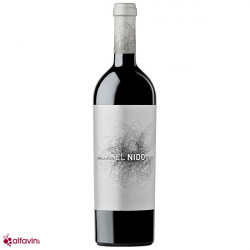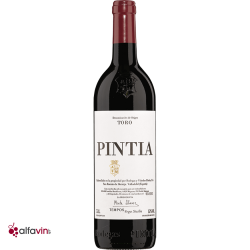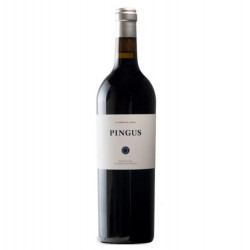Visual examination
The temperature of the wine
The olfactory examination
Taste sensations

Visual examination
Colour
The wine should be viewed against a white background or light to observe the colour and clarity. For the colour, we can use a colour chart. For example, we can say pale yellow, golden yellow, amber ... for white wines, or purple, ruby, cherry ... for red wines.
The intensity is also a criterion to analyse from pale to intense through average, sustained, dark, deep ...
Clarity (or transparency)
We generally use the terms clear, light, transparent or on the contrary muddy, broken, cloudy, warped, etc..
Un vin trouble n'est pas forcément signe d'un défaut. Une part croissante de vignerons produisent un vin signalé sans filtration sur la bouteille. Ce sont des producteurs qui estiment que le léger trouble est un inconvénient minime en regard des avantages : subtilité et complexité des arômes.
Viscosity
- The rim (tilt the glass and observe the surface of the wine on the edge of the glass)
- The streaks (formed on the wall of the glass after swirling). These streaks that stream down the glass are called the "tears" or "legs".
The legs and the thickness of the rim indicate the content of glycerol (fats), alcohol (ethanol) and sugars. If more legs are abundant then the content of glycerol / ethanol is high. If more legs are slow to drain, then the residual sugar content is high. This type of tasting concerns mainly the big wines, opulent and rich but also sweet and liqueur like wines.
Effervescence
The effervescence is due to the presence of CO2.
In a sparkling wine, we judge the speed and finesse of the bubbles, the persistence of release, keeping the cord of bubbles along the wall of the glass.

The temperature of the wine
- An operating temperature below 5 ° C will definitely mute the nose of the wine and emphasis the perception of acid in white wines and tannic acid in red wines.
- If you consume a red wine above room temperature, that is to say at 20 ° C or 25 ° C, the alcohol, the volatile component, will smother the other aromas.
- 6-8 ° C champagne or sparkling
- 8-12 ° C young and light white wine, sweet wine
- 10-14 ° C a white wine to keep
- 14-16 ° C young and light bodied red wine
- 16-18 ° C powerful red wine

The olfactory examination
The aromas
There are 3 major categories of aromas:
- The primary aromas or aromas of the grape variety:
These are aromas that come from the grapes and are immediately observed without circular swirling of the glass. They are the potential fruity and floral aromas. - The secondary aromas or aromas of fermentation:
They come from the alcoholic fermentation and are observed after circular swirling of the glass. They depend on the sugar content of grapes (degree of maturity). These are the smells of yeast, bread, bananas, English or sour sweets, nail varnish and solvents. - The tertiary aromas or bouquet:
These are the aromas of aging. The wine with its fruity and floral character of his youth, will develop into notes of macerated fruit, dried fruit, candied nuances often associated with either mineral (usually for white wines) or animal (for red wines). In wines stored in barrels, we appreciate the woody note.

Taste sensations
Taste concepts
The four basic tastes
Sweet:
- is perceived on the tip of the tongue;
- it is immediately apparent;
- the sensation reaches its maximum after two seconds and disappears after ten seconds.
Interpretation: Sweetness gives at the same time elements of suppleness, body and softness. This is the most primitive flavour. The perception of sweetness decreases over time.
Acid/Sour:
- is perceived on the sides and bottom of the tongue;
- it is immediately apparent;
- lingers as the salty taste;
Interpretation: acidity/sourness gives freshness.
Salty
- is perceived on the sides of the tongue;
- it is quickly apparent
- lingers more than the sweet;
Interpretation: the salty flavour gives freshness and reveals the palatability.
Bitter
- is perceived on the back of the tongue;
- slow to develop,
- increases and remains long.
Interpretation: the bitterness is often associated with a sensation of astringency (dryness of mouth) associated with the tannins.
Salivation
Acids will make your mouth water more than other tastes. Remember the best tasting foods make your mouth water more.
- Sweet: production of thick and viscous saliva;
- Sour: production of liquid and abundant saliva;
- Salty: no change in salivation;
- Bitter: decreased salivation and appearance of a certain dryness
The other taste sensations
Tannins:
Astringency:
The astringency causes dry mouth and gums and a feeling of roughness (rough tongue).Interpretation: some tannins are not yet integrated in the body of the wine (due to youth) or the bitterness is due to a lack of ripeness at harvest time and / or presence of cobs.
Fats:
It is the character of a smooth wine. The fats may help to soften the rough tannins of a red wine.Sparkling:
It is due to the presence of bubbles of CO2 released by alcoholic fermentation. It can be looked for in wine to give a bit of freshness. In a sparkling wine you search for the finesse and persistence of bubbles.The gustatory analysis
To analyse a wine in the mouth, is to determine its attack, its balance, its evolution and its length.
Attack
The attack is the first sensation after one has swallowed the wine, it is still soft. The softness is provided by the alcohols contained in all wines and the residual sugars in the case of sweet wines. We can judge that a soft attack is short, medium or long. It will be long if the softness is important and / or the sour or bitter taste or astringency takes over gradually. The evaluation of the length of the soft attack is relative.Evolution
During the tasting of a wine, we feel successive tastes. Often the last impression (bitter finish) may be very different from the first (soft attack). The analysis of the evolution of wine in the mouth (attack → evolution → finish) reflects the quality of a wine.Length
The "length" is the time in seconds that the flavour lingers in the mouth. When the persistence of the aroma is no longer noticeable in the mouth, there is a recovery of salivation.Interpretation: the more a wine will be long, the more interesting it will be to combine it with suitable foods. Indeed, there will be more space for the overlay of wine / food flavours.
The balance of wine in the mouth
After recognition and evaluation of the different tastes in wine, we must determine their power and especially their rapport. Their balance depends on the harmony of the constitution of the wine. When a wine is well balanced, the wine is said to have achieved a harmonious fusion It is the analysis of the balance of these components of the wine:
- soft (or sweet), sour and alcohol for white wines;
- soft, sour, tannins and alcohol for red wines.
Want to learn more about Italian and Spanish wines from the comfort of your own home? Then opt for our monthly wine subscriptions and let us guide you on a wine journey.









